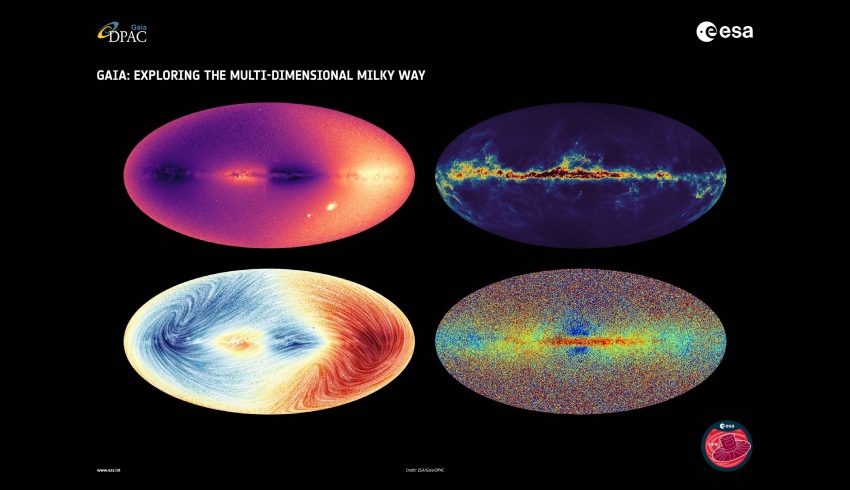
The details were revealed in the telescope’s Data Release 3 and provides updated information about almost two billion stars in the Milky Way galaxy, such as their chemical compositions, stellar temperatures, colours, ages and more.
Gaia was launched in 2013 and is on a mission to survey more than a billion stars, charting the largest three-dimensional map of our galaxy, the Milky Way. In so doing, the spacecraft is revealing the composition, formation and evolution of our galaxy, and is poised to continue until 2025.
This latest data release revealed a “surprising” discovery about starquakes, which are tiny motions on the surface of a star that change the shapes of the stellar objects.
According to the ESA, Gaia previously found radial oscillations that cause stars to swell and shrink sporadically while maintaining their spherical shape. But now, Gaia has located vibrations that are more like “large-scale tsunamis” that do alter a star’s global shape.
“Starquakes teach us a lot about stars, notably their internal workings. Gaia is opening a goldmine for ‘asteroseismology’ of massive stars,” says Conny Aerts of KU Leuven in Belgium, who is a member of the Gaia collaboration.
The space agency said that Gaia found these non-radial starquakes in thousands of stars, including ones that have been studied before.
Its observations of starquakes prove that Gaia is capable of far more than it was set out for, as the observatory was not originally built for studying these types of movements in space.
For the past nine years, the Gaia spacecraft has been travelling in an orbit designed to keep it out of Earth’s shadow, known as the second Lagrange point.
At 1.5 million kilometres from Earth – four times further than the moon – the “L2” is a fabulous place from which to do science. As the sun, Earth and moon are all in one direction relative to the spacecraft, the rest of the sky is free to observe.
Gaia’s latest data set also revealed information about the DNA of stars through a chemical map of the galaxy with 3D motions, which gives insight into their birthplace and time following that.
The ESA said that some stars contain heavy metals, as opposed to most that were formed with lighter elements such as hydrogen and helium. Heavy metals are typically built inside stars.
“When stars die, they release these metals into the gas and dust between the stars called the interstellar medium, out of which new stars form,” the agency said.
“Active star formation and death will lead to an environment that is richer in metals. Therefore, a star’s chemical composition is a bit like its DNA, giving us crucial information about its origin.”
Gaia found that some stars are made of primordial material, while others like the sun are made up of matter from previous generations of stars, the ESA said. Therefore, stars that are closer to the centre of the Milky Way galaxy have higher substances of metal compared to stars further away.
“Our galaxy is a beautiful melting pot of stars,” says Alejandra Recio-Blanco of the Observatoire de la Côte d’Azur in France, who is a member of the Gaia collaboration.
“This diversity is extremely important, because it tells us the story of our galaxy’s formation. It reveals the processes of migration within our galaxy and accretion from external galaxies. It also clearly shows that our sun, and we, all belong to an ever-changing system, formed thanks to the assembly of stars and gas of different origins.”
Every day, Gaia sends 20 to 100 gigabytes of data back to Earth, equating to about 850 million individual star observations, Space.com notes.
Over 400 researchers from the Gaia Data Processing and Analysis Consortium (DPAC) across Europe spend years processing and validating the information that are then packaged into the data releases. The previous one – Data Release 2 – was unveiled in 2018.

Isabella Richards
Bella Richards is a journalist who has written for several local newspapers, her university newspaper and a tech magazine, and completed her Bachelor of Communications (Journalism) at the University of Technology Sydney in 2020. She joined Momentum Media in 2021, and has since written breaking news stories across Space Connect, Australian Aviation and World of Aviation.
You can email Bella on: [email protected]
Receive the latest developments and updates on Australia’s space industry direct to your inbox. Subscribe today to Space Connect here.









